What heart remains untouched by the amazing yet sad story of White Fang? The half-woolf half-dog’s faith brought tears in many children’s eyes, as he was sold to be a sled dog in the harsh and frozen Yukon Territory. Somehow Jack London’s character came to my mind as we began our Husky Homestead tour that morning in Denali. The country house is home of four-time Iditarod Champion Jeff King and his Iditarod sled dogs.
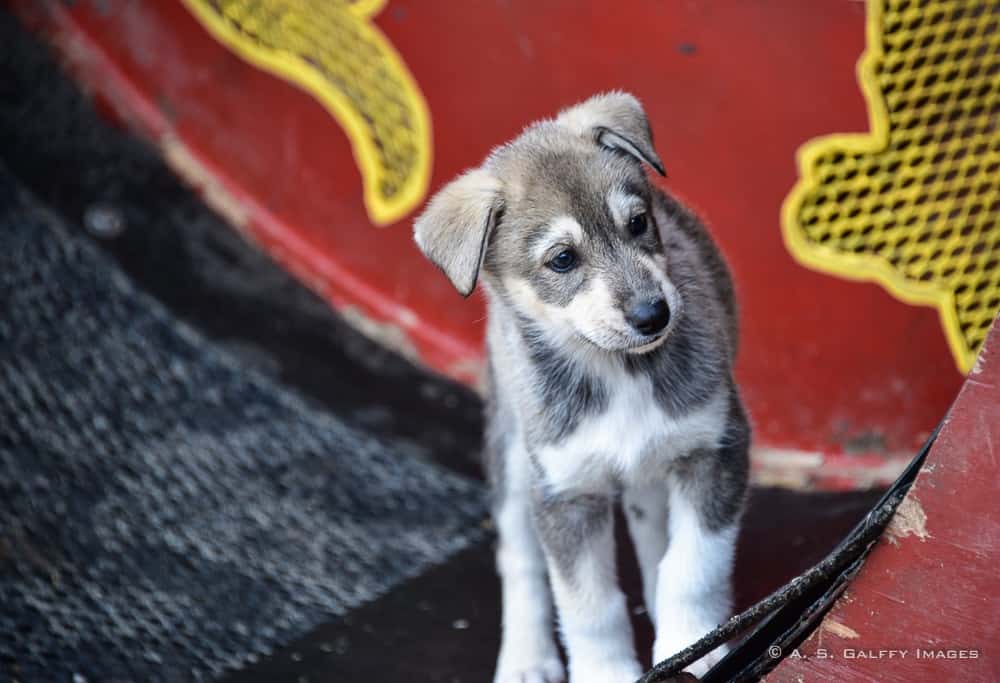
The tour started with a heartwarming puppy cuddling. August is supposed to be still warm in Alaska, but summer was rushed out in a hurry this year. The previous day’s snow was still covering the mountains. The morning was freezing cold and the little dogs greeting us were shivering. They seemed so happy to be picked up and hugged!
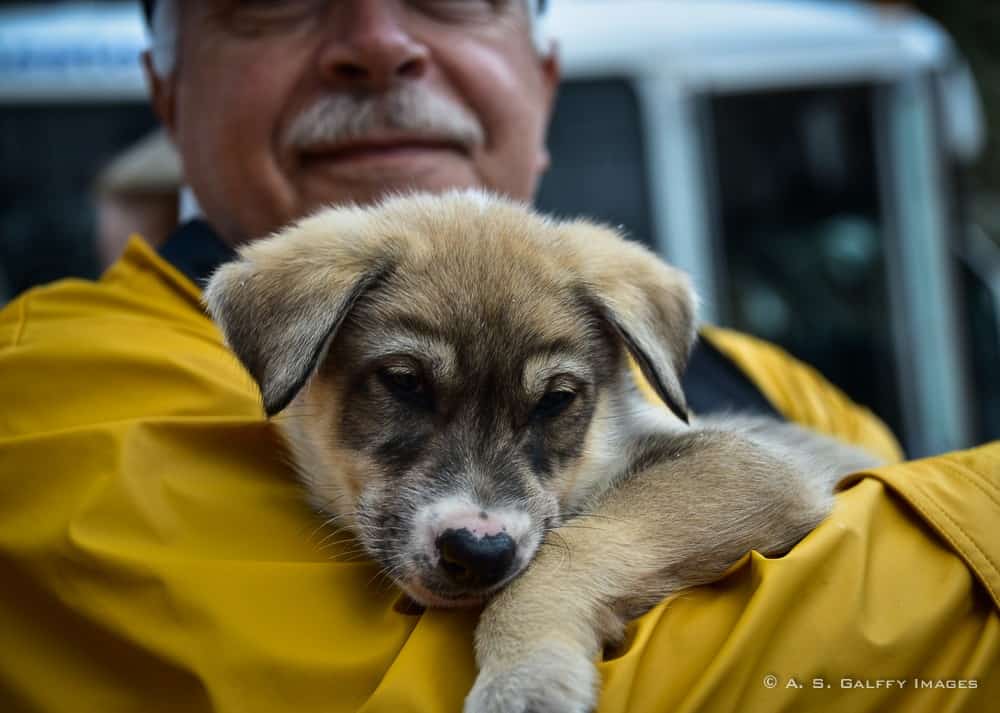
Table of Contents
The Iditarod Sled Dogs
Before going to Alaska, I had no idea about the Iditarod sled race. Or about mushers and their dogs – the Alaskan Huskies which are somewhat different from the Siberian Huskies I was accustomed to.
Unlike the blue-eyed Siberian Husky, the Alaskan Husky is rather a type of dog than a specific breed. Besides, the breed is not recognized by any kennel club. But don’t let this average looking dogs fool you. Even though they won’t make it to the dog shows, they surely are the strongest sled dogs out there.
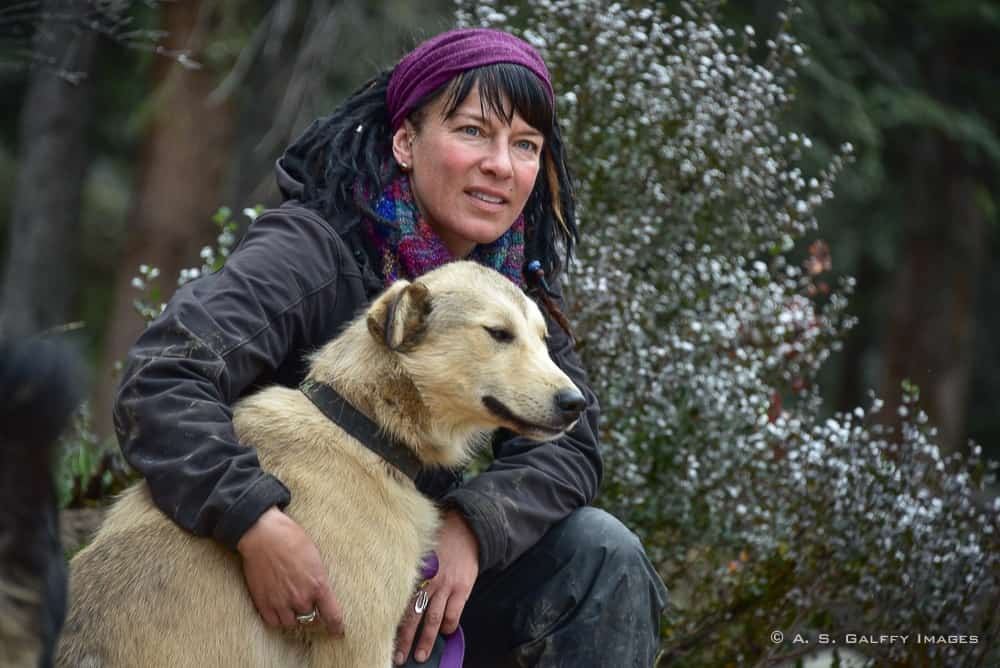
A Brief History of the Iditarod Race
The Iditarod race was inspired by a memorable sled dog relay to deliver a life-saving medicine to the remote village of Nome.
In the winter of 1925, the children of Nome were dying from diphtheria. The only way to stop the fast spreading was a vaccine that rested more than 1,000 miles away, in Anchorage. But nobody could reach Anchorage. The harbor waters were frozen and the planes couldn’t fly in subzero temperatures. The only hope for Nome were the sled dogs.
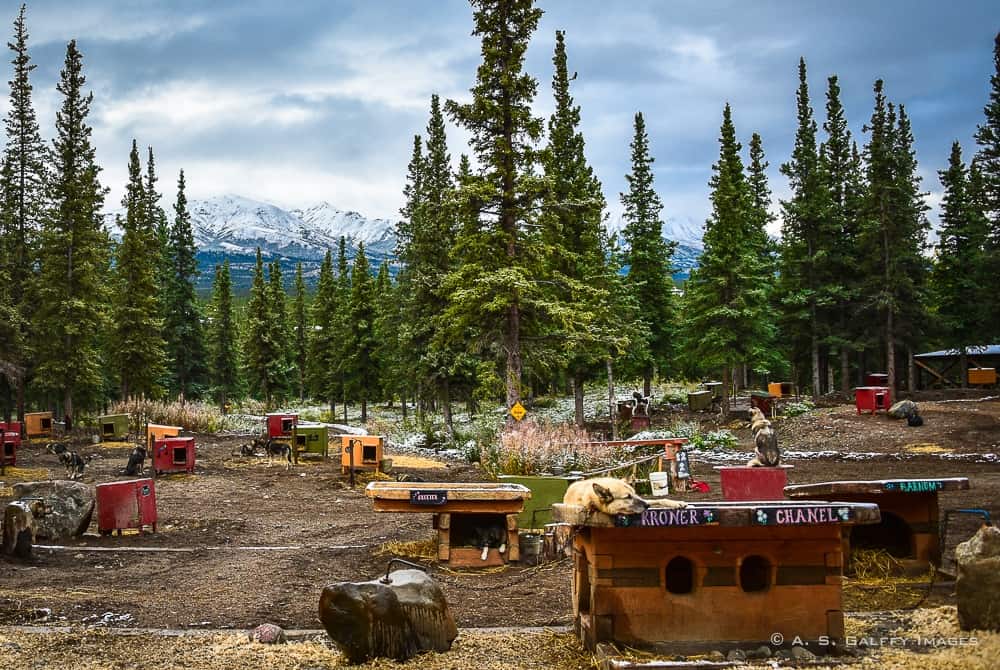
Today, the Iditarod race starts in Anchorage each year in March. The race lasts anywhere from 8-12 days, ending when the last musher crosses the finish line.
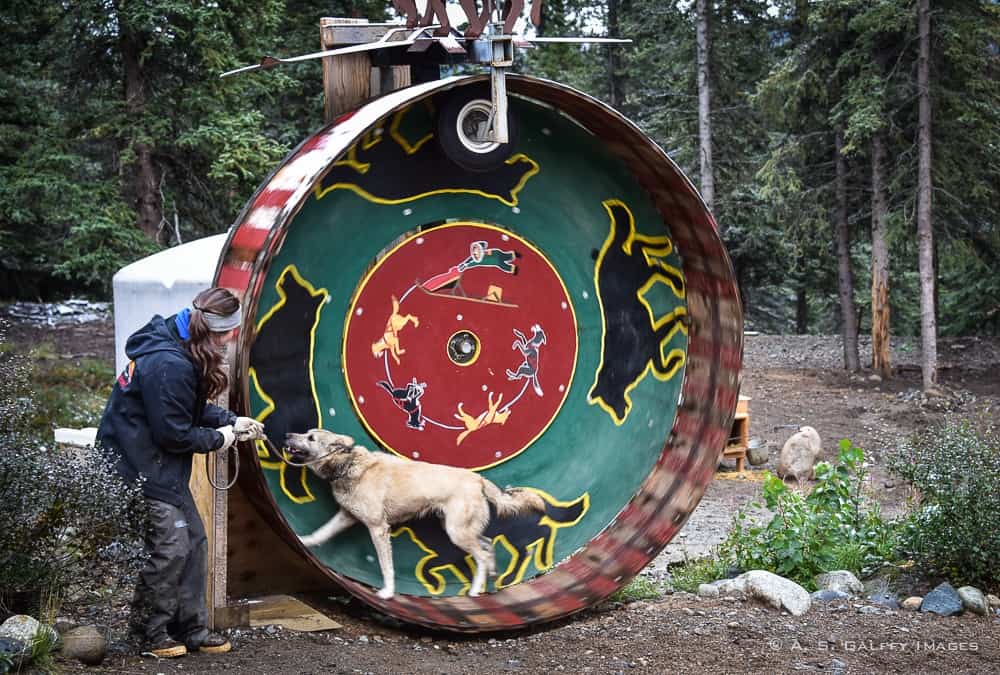
Touring the Husky Homestead
The tour continued with an introduction into the daily life at the Husky Homestead. The mushers train the dogs, as they get prepared for the Iditarod sled race. The dogs are chained to their own cages to keep them from fighting with each other. They all have very funny names.
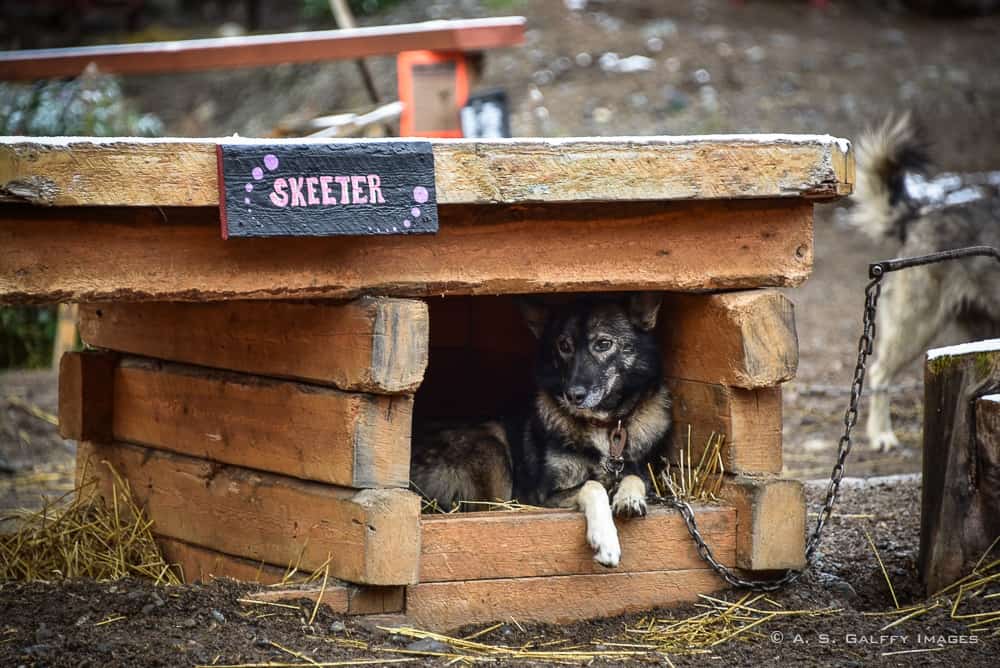
When new puppies are born, Jeff King’s daughters are in charge of naming them. And since there are so many litters to be named, the girls’ imagination faces serious challenges. So names like Merlot, Bailey, Rebel, Burglar, Menace and Suspect are very common.
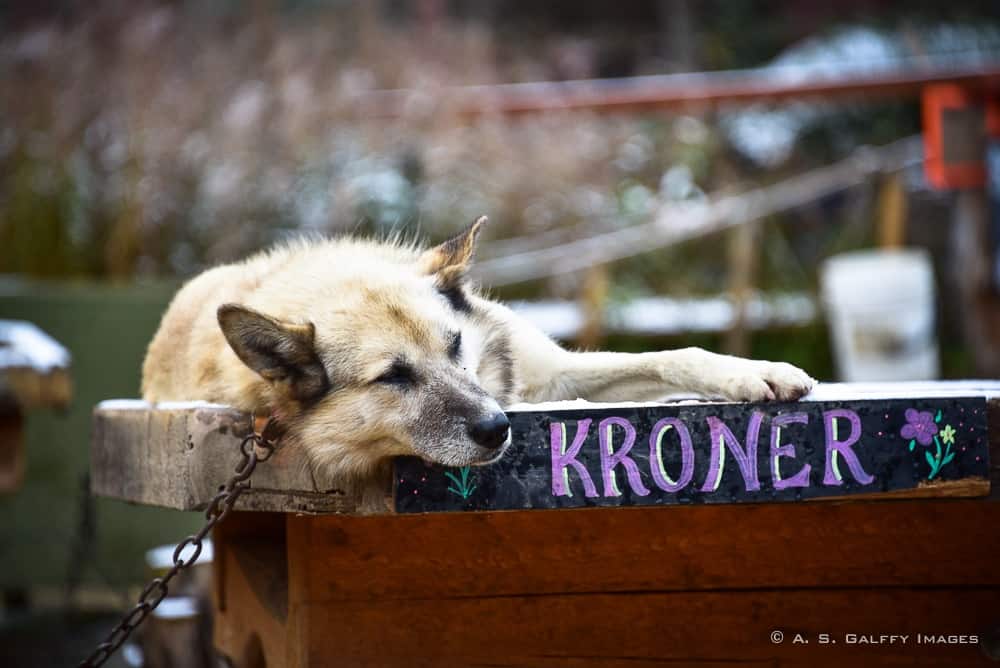
The trained selected some of the Iditarod sled dogs for a race demonstration around the grounds. The pack was howling like crazy, trying to catch the trainers’ attention in order to get selected. But the moment the team was complete and they realized they won’t be picked, the howling suddenly stopped.
These dogs are really smart and they obviously LOVE to run! It seems that both mushers and dogs get an adrenaline rush from racing. That’s probably what keeps them running up to 150 miles/day for 10 days straight.

The Challenges of the Mushers and Sled Dogs in the Iditarod Race
Running the Iditarod is extremely challanging for both the mushers and their dogs. It takes years of preparations and training to increase the team’s chances of winning.
Sadly enough, the $50,000 prize barely covers the costs involved in running this world race. But that doesn’t keep the passionate participants from pouring every bit of energy and funds they have into it.
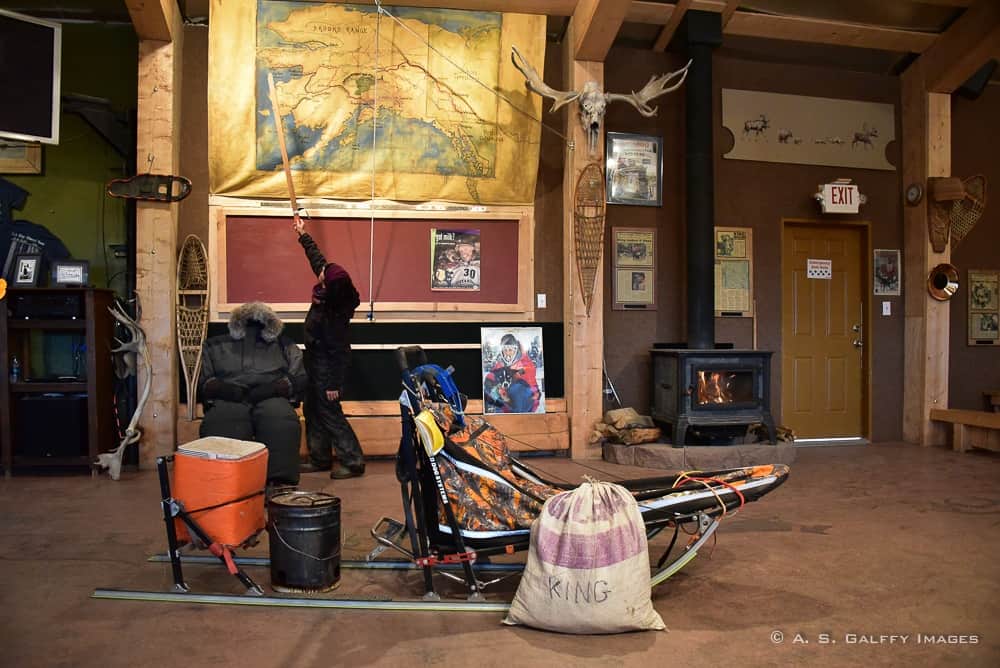
Preparations for the Iditarod begin long before the race starts. All dogs are being examined by a veterinarian before the race. The mushers send food and other supplies in drop bags to checkpoints by helicopter. Straw is also available at the checkpoints that the musher can use for the dogs to camp.
How the Iditarod Race Unfolds
There are only a few things they can carry on their sleds during the race:
- a Vet Book that has notes on each Iditarod sled dog (this is mandatory and is checked by a vet at each checkpoint)
- a cooler with high-callory dog treats
- a 3-gallon pot with a double bottom that acts like a kerosene stove
- dog booties
- dog coats
- foot ointment for the dogs
- an ax
- a pair of snow shoes.
As they stop on the road, they melt snow in the pot to prepare food for themselves and for the dogs. Before taking care of his/her own needs, the musher will first take care of the dogs: examine them, change their booties, massage their muscles, feed them and put them to rest. This last task seems to be the must difficult, as the dogs love so much to run that it’s hard to convince them they need to rest once in a while during the race.
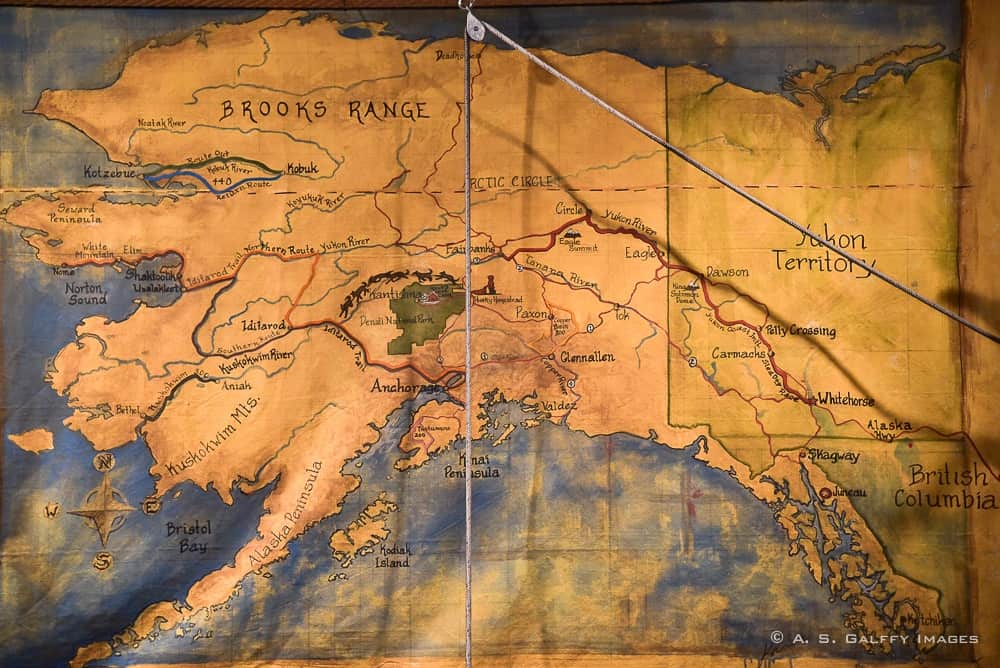
The 1100 mile long trail through rugged wilderness, across frozen waters and over the treeless tundra is more than demanding for the dogs. They often get injured and have to be dropped from the race at the check points. An elaborate system has been established to care for and transport dropped dogs so that they can safely return to their homes.
A Final Note
I have to confess that we we weren’t expecting much from the Husky Homstead Tour. We only booked it because the weather was pretty bad that morning in Denali, so there was nothing else to do. The wind was blowing hard and a new storm was coming in, so our fancy helicopter tour and highh-alipine tundra hike had been canceled.
Looking back at our Husky Homestead tour, we are glad we chose it. The tour gave us a glimpse into the rural Alaska, but also a rare look at the behind-the-scene preparations that take place for the Iditarod sled race.
Disclosure: In preparation for this post, I read some sad reports about animal abuse during the Iditarod race. While these reports may be true, I personally haven’t seen any sign of animal abuse or mistreat of the dogs at the Husky Homestead of Jeff King. This article is no way a promotional post for the Iditarod race, or the Husky Honstead tour.

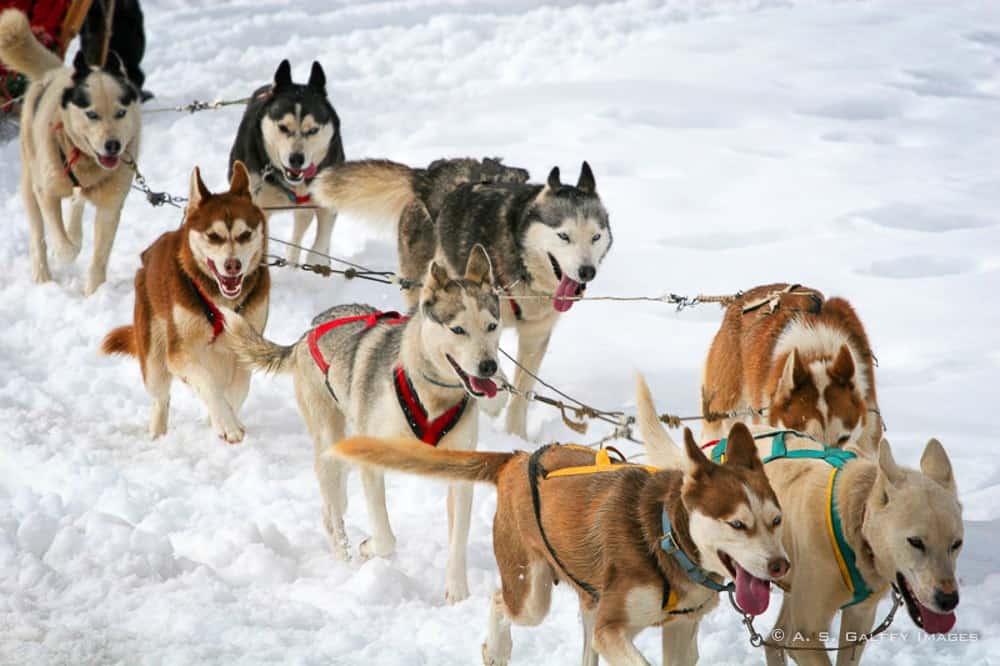
 5 Incredible Attractions You Shouldn’t Miss in Vancouver, Canada
5 Incredible Attractions You Shouldn’t Miss in Vancouver, Canada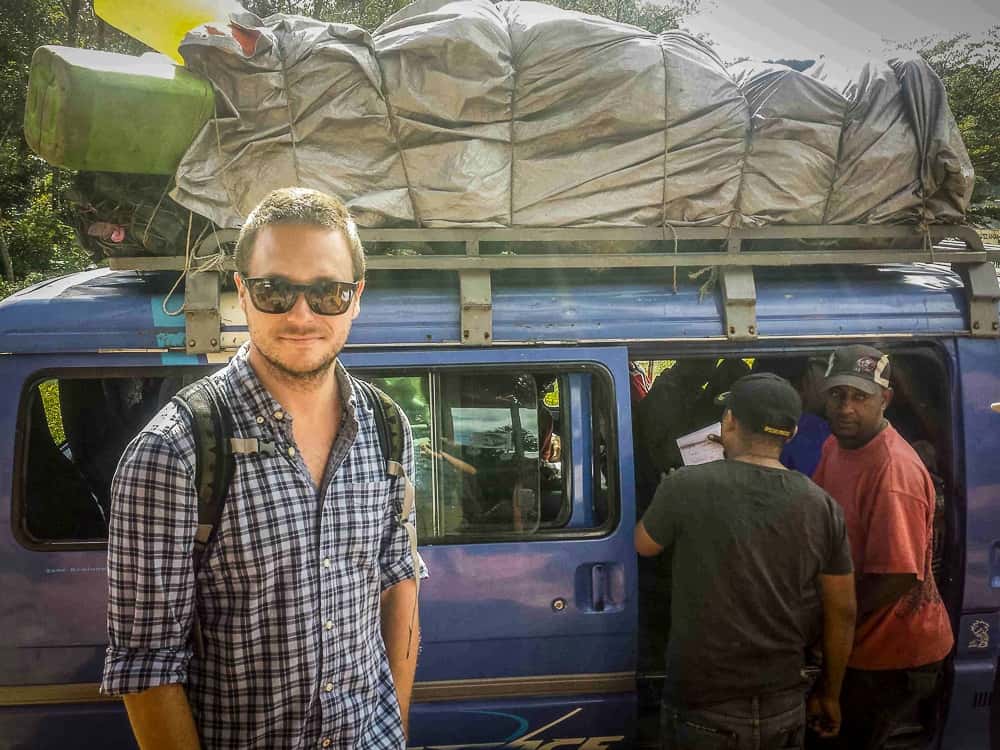

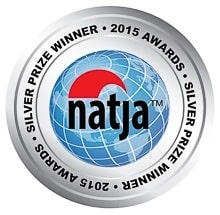

Sinjana Ghosh
Oh this post is an overdose of cuteness. Can’t stop looking at these beautiful adorable creatures. This is an unique tour i never heard about before. The scenary is stunning too. Definitely something to watch out for.
blair villanueva
Very interesting story about these brave dogs. I saw a related movie about these huskies and it was beautiful. Their loyalties are beyond any boundaries. And they awesomely work as a team, a strong pack.
Soumya Gayatri
The story behind the origin of the Iditarod race was a heartwarming one. I had never heard of it and it was fascinating to read a post on the topic. While the origins may have been harmless, it is not uncommon to see animals being mistreated for races like these. I am glad you did not see signs of animal abuse at Husky. Hope they treat the animals well at all times. My kiddo and I loved the names of the dogs. Suspect and Burglar were my favorites. 🙂
Anda Galffy
Although I didn’t see them mistreating the dogs, I’m pretty sure it’s not all sugar and honey there. However, it’s in the mushers’ best interest to keep the dogs healthy and well fed, or they won’t have many chances to win the race.
Swati & Sam
That’s an interesting story about the sled dogs delivering medicine. Some of the dogs in the picture look a little sad. To be honest, not a big fan of dogs being used for any kind of racing.
Jane Dempster-Smith
Such an interesting story. I did not know either there were differences between the Alaskan and Siberian Huskies. 1100 mile Iditarod Race – I enjoyed reading the history of the race and I am so glad that you pointed out about not seeing any cruelty for the dogs participating in the race. BTW loved the cute puppies.
Lisa
That makes me so sad to think any of these wonderful dogs are being mistreated. I adore dogs, and animals in general, and would love to cuddle a few of these guys! That race is so arduous and long too! Thank you for bringing to my attention these great dogs, and this new race too.
Anda Galffy
I agree with you, Lisa. If it were up to me I wouldn’t allow this race to take place.
Sarah
Fascinating post, I have never heard of this race before. Sadly with any activity that involves animals, there are always tales of abuse but pleased the ones you met seemed happy. And as for puppy cuddles, that’s always a great way to start any day 🙂
Soraya
Sounds like quite an interesting journey to learn about the Iditarod sled race. I am glad to read that you did not seen any signs of abuse during your tour. The dogs look all so gorgeous and loving, and it’s lovely to hear about how smart they are. Incredible that the $50k prize barely covers the cost of running the competition!
Anda Galffy
Yea, that is kind of sad because these people put so much effort in it.
Aaron Kriegerson
Thanks for sharing your adventures in Alaska with us, Anda. The pictures of the Huskies are so cute. I’ve always wanted to visit Alaska. It’s on my bucket list. I bet seeing things from a helicopter made things even more spectacular. Thanks for posting.
Linda Bibb
What a unique experience. It sounds like you had a great time, Anda, and learned a lot about the dogs and Iditarod race.
As with most things, I’m cautious to lump all Iditarod racers into any one category. Although some may be cruel masters, I’m sure that others really love their dogs and treat them well. Certainly it sounds like Husky Homestead is in the latter category.
AKC eligible or not, I agree with Vlad: Those puppies are absolutely adorable!
Anda Galffy
Thank you, Linda. I’m glad if you learned something new from my post. It was new for me too when I first visited this place. Alaska is such a strange land!
Traveling Rockhopper
They’re so cute!
Vlad
That puppy is adorable, I would have been tempted to put him under my coat and run away. I was going to ask how are the dogs treated, but then I read your disclosure and some of the comments. It made me so sad, I went to give my dog a hug. 🙁
Anda Galffy
You are lucky to have your dog, Vlad. Cherish him while he is still with you. I am about to loose mine to cancer.
Paula McInerney
I have only read about how much the owners love their dogs in the Iditarod race, but then maybe I haven’t read enough. I like to think that they well cared for and that they enjoy the experience also. I can only go with your viewpoint and you seem to be a good judge of these things, and you have experienced this first hand.
Anda Galffy
It’s hard to say where the truth is, Paula. While I’m sure these dogs are well taken care of, I can’t tell to what extent they are being pushed or how happy they are. They for sure love to run, that’s not a question.
Liz
I love dogs!!! I was awwing at every photo on this post — they look absolutely adorable! Thanks for sharing your experiences!
Jennifer (Dr. J)
This looks like such a cool tour! Thanks for sharing. The photos are stunning.
Louisette
Adorable puppies. This must have been a very interesting tour.
Shilpa Balakrishnan
I am afraid they abuse dogs during the race? I am not sure why they’d be tied in their homes unless they are aggressive. This post is good for some of us who has little knowledge about the Iditarod Race.
Anda Galffy
I don’t like that they keep them chained, but it’s hard to keep in control such a big number of dogs. Like I reported in my post, I haven’t seen any signs of abuse at this particular farm.
Sand In My Suitcase
Oh, those puppy pictures! So cute! It’s very sad to hear reports about animal abuse on the Iditarod sled race (or elsewhere). We took a short dog-sled tour in Alaska as a cruise ship excursion some years ago – and those huskies all looked well-fed, alert and in good shape (maybe we were ignorant?). Since then, however, there was the shocking cull (execution) of 100 sled dogs in Whistler after the Olympic slowdown. We understand the B.C. provincial government has since enacted protection for sled dogs in B.C., outlining appropriate sled dog living conditions and requiring sled dogging businesses to arrange for the lifetime care of the dogs. But apparently the regulations also go into more humane ways of euthanizing sled dogs – so the whole business of whether commercial sled dogging is ethical is still up for debate…
Anda Galffy
I am very concerned about animal abuse at all levels, but in this particular case we haven’t seen anything that would be a red flag. I think these dogs were well cared for, even if they were tethered. Their chains were pretty long and didn’t seem to inconvenience them. I think this was for their own protection, to keep them from fighting with each other.
Rhonda Albom
We opted not to go to the Husky Homestead when we were in Denali. Your photos and story make it seem quite a bit more interesting than we thought it would be. We saw the husky’s in the park on one of the Ranger tours, and we had already seen and pet puppies in Anchorage. I loved Denali.
Anda Galffy
I was reluctant to go too, Rhonda. I thought it would be pretty boring, but it turned out to be quite interesting.
Margery Glickman
From the Sled Dog Action Coalition, http://helpsleddogs.org
Iditarod dogs suffer horrendous cruelty every day of their lives. Mushers have drowned, shot, bludgeoned and dragged many dogs to death. For example, Iditarod musher Dave Olesen drowned a litter of newborn puppies. Another musher got rid of unwanted puppies by tying them in a bag and tossing the bag in a creek. Mushers even have a saying about not breeding dogs unless they can drown them: “Those who cannot drown should not breed.”
Terrible things happen to dogs during the Iditarod. This includes: death, bloody diarrhea, paralysis, frostbite (where it hurts the most!), bleeding ulcers, lung damage, pneumonia, ruptured discs, viral diseases, kennel cough, broken bones, torn muscles and extreme stress. At least 146 dogs have died in the race, including four dogs who froze to death in the brutal cold.
Veterinary care during the Iditarod is poor. In the 2012 race, one of Lance Mackey’s male dogs ripped out all of his 16 toenails trying to get to a female who was in heat. This type of broken toenail is extremely painful. Mackey, a four-time Iditarod winner, said he was too stubborn to leave this dog at a checkpoint and veterinarians allowed Mackey to continue to race him. Imagine the agony the dog was forced to endure.
Here’s another example: Veterinarians have allowed dogs with kennel cough to race in the Iditarod even though dogs with this disease should be kept warm and given lots of rest. Strenuous exercise can cause lung damage, pneumonia and even death. To make matters worse, kennel cough is a highly contagious disease that normally lasts from 10 to 21 days.
Iditarod dogs endure brutal training. Jeanne Olson, who has been a veterinarian in Alaska since 1988, confirmed the brutality used by mushers training dogs for the Iditarod. She talked about dogs having cracked ribs, broken jaws or skulls from mushers using two-by-fours for punishment. In an article published by the University of Alaska, Dr. Olson said, “There are mushers out there whose philosophy is…that if that dog acts up I will hit that dog to the point where it would rather die than do what it did, ’cause the next time it is gonna die.'”
Jane Stevens, a former Iditarod dog handler, describes a dog beating in her letter published by the Whitehorse Star (Feb. 23, 2011). She wrote: “I witnessed the extremely violent beating of an Iditarod racing dog by one of the racing industry’s most high-profile top 10 mushers. Be assured the beating was clearly not within an ‘acceptable range’ of ‘discipline’. Indeed, the scene left me appalled, sick and shocked. After viewing an individual sled dog repeatedly booted with full force, the male person doing the beating jumping back and forth like a pendulum with his full body weight to gain full momentum and impact. He then alternated his beating technique with full-ranging, hard and fast, closed-fist punches like a piston to the dog as it was held by its harness splayed onto the ground. He then staggeringly lifted the dog by the harness with two arms above waist height, then slammed the dog into the ground with full force, again repeatedly, all of this repeatedly.”
During the 2007 race, eyewitnesses reported that musher Ramy Brooks kicked, punched and beat his dogs with a ski pole and a chain. Jon Saraceno wrote in his column in USA Today, “He [Colonel Tom Classen] confirmed dog beatings and far worse. Like starving dogs to maintain their most advantageous racing weight. Skinning them to make mittens. Or dragging them to their death.”
Jim Welch says in his book Speed Mushing Manual, “Nagging a dog team is cruel and ineffective…A training device such as a whip is not cruel at all but is effective.” He also said, “It is a common training device in use among dog mushers…” Former Iditarod dog handler Mike Cranford wrote in Alaska’s Bush Blade Newspaper: “Dogs are clubbed with baseball bats and if they don’t pull are dragged to death in harnesses…..”
Anda Galffy
I am really saddened about your comment. While I am aware of some dog abuse by the Iditarod handlers, I personally haven’t sensed any animal mistreatment at the Husky Homestead of Jeff King. Let’s remember that not all dog handlers are animal abusers. Besides, my post is by no means a promotional one, but barely a report of what I saw during my visit there.
Margery Glickman
Tethering is very cruel to dog, and Jeff King tethers his. If you type Jeff King into a search bar you’ll get a lot of information about the cruelties he’s forced his dogs to endure. For example, he had Dave DeCaro race two of his pregnant puppies in the 2010 Iditarod. Strenuous activity is bad for all pregnant dogs.
Laz
The Iditarod race is about the real world, not a cozy downtown apartment for pets. Taking your logic to extremes, any decision making is cruelty!
Suze - LuxuryColumnist
Those puppies are so adorable and the tour must have been fascinating. Doing sled riding is one of my dreams, though not a race, just a taster session
Anda Galffy
Thank you for your comment, Suze. I would have liked to try sled riding, but there was not enough snow at this time of year.